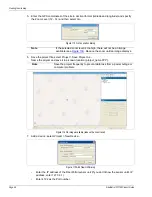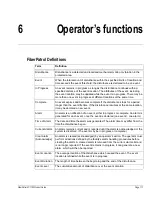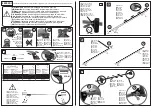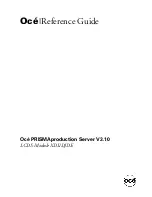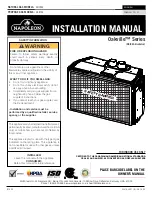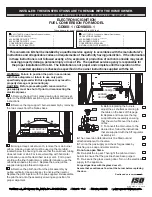
Setting Alarm Detection Parameters
FiberPatrol FP1150 Product Guide
Page 107
The Low Frequency filter is used to screen out low frequency vibrations such as the fence
motion caused by steady wind and loose fence fabric. The High Frequency filter is used to
screen out high frequency vibrations. When the number 0 is displayed for the high frequency
filter, it indicates the High Frequency filter is at the default value (maximum). The default
settings of the Filter Cutoffs are factory set to provide good detection on most types of fences.
•
The Disturbance Threshold is the minimum level that a localized disturbance must reach to be
accumulated and counted towards alarm generation. The Disturbance Threshold is indicated
by a red line in the disturbance level display. This sets the sensitivity of the system together
with the Alarm Threshold. The default value is 5.
•
The Alarm Threshold is the minimum disturbance count that must accumulate within a location
range and a time range (determined by the Disturbance Life setting) in order to generate an
alarm. The Alarm Threshold determines the sensitivity of the system together with the
Disturbance Threshold. The default value is 10.
•
The Duration Threshold is the minimum event duration (in seconds) required in order to
declare an alarm. The Duration Threshold is used for rejecting events that are too brief to be
considered a valid intrusion attempt. The default value is 2 seconds.
•
The Disturbance Life is the length of time, in seconds, for which any localized disturbance is
retained. If the total amount of disturbance in the localized area does not reach the alarm
threshold in this period, the accumulated disturbance is discarded. The default value is 10
seconds.
•
The Disturbance Mask is used to prevent a single disturbance event from being recorded as
additional disturbances due to continuing reverberations caused by the initial disturbance. The
default value is 0.3 seconds.
•
The Disturbance Range defines the length of cable over which a current disturbance event
can be added to by additional disturbances in the same general area. The default value is
12 m (39 ft.).
•
The Event Life is the length of time, in seconds, following an event (alarm) before another
event (alarm) can be declared at the same location. The default value is 60 seconds.
Intrusion simulation tests
To test the FiberPatrol sensor you conduct intrusion simulations. Using the Save Raw Data
function, thoroughly test the detection along the full length of the sensor cable, while recording
each test. Use the Load Raw Data function to playback the recorded data and adjust the detection
parameters if any of the test intrusions fails to report an alarm simulation.
Once the intrusion testing is completed, briefly run the Save Raw Data function during periods of
inclement weather (30 seconds to 1 minute max.). Replay the saved data and adjust the detection
parameters if bad weather causes an unacceptable nuisance alarm rate (NAR). Once the system
is detecting all intrusion simulations and the NAR is acceptable, the sensor is properly calibrated.
Update the Factory Configuration to include the processor’s current settings.
Simulated cut intrusion tests
The easiest method for simulating a cut intrusion is to strike the fence with the blade of a medium
sized screwdriver. Hold the screwdriver by the handle, and flip your wrist to strike a fence wire with
the blade of the screwdriver. The metal on metal contact generates an impulse that is similar to the
cutting of a fence wire. Strike the fence firmly, but do not use excessive force. Try to use a
consistent amount of force each time you strike the fence.
CAUTION
The Save Raw Data function typically creates very large files. Do not use
the Save Raw Data function for extended periods. When conducting
intrusion tests, start the Save Raw Data at the beginning of each test, and
stop it when the test is completed.






